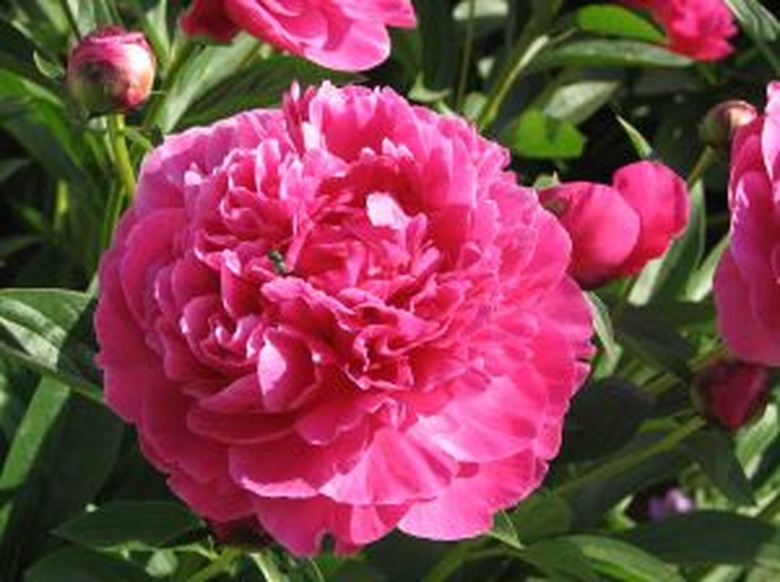Fall Care Of Peonies
Things Needed
- Shears
- Knife
- Straw mulch
Tip
Use evergreen tree boughs instead of straw for winter mulch.
Warning
Do not bring peonies inside to winter, they require a cold period to go dormant before spring growth. Always destroy clippings and old mulch from peony beds to avoid fungal infections. Botrytis will attack healthy plants during cold, rainy weather and destroy your peony beds.
Peonies are prized in flower gardens for their easy care and colorful blooms. A bed of peonies may flower for up to 50 years with minimal maintenance. They work well as bedding plants, in borders and as an edging flower. The long-lasting blooms begin in early summer and continue to the first freeze of fall. Ensuring the beauty of your peony beds requires minimal fall season care but is important nonetheless to ensure maximum blooms and minimal diseases next year.
Step 1
Allow the leaves to yellow and die back naturally. Avoid removing green or growing leaves and stems.
- Peonies are prized in flower gardens for their easy care and colorful blooms.
- A bed of peonies may flower for up to 50 years with minimal maintenance.
Step 2
Cut down the peony bed after the first fall frost kills off all the leaves. Cut the stems down to the ground and dispose of them. This prevents botrytis, or gray mold, from infecting your peony bed.
Step 3
Remove any spring or summer mulch. Remove old grass clippings, fallen leaves and weed the bed thoroughly. Dispose of the mulch and garden debris instead of composting.
Step 4
Divide plants if necessary. Clumps require dividing every 15 to 20 years or when they stop flowering as profusely. Dig up the peony clump and rinse off the soil. Cut the clump into sections with a sharp knife ensuring each section has healthy roots attached and three to five eyes where the stems grow from. Plant elsewhere in the garden if desired.
- Cut down the peony bed after the first fall frost kills off all the leaves.
Step 5
Cover peonies with straw mulch to maintain ground temperature during the winter. This is especially important in freezing climates with little snowfall.
